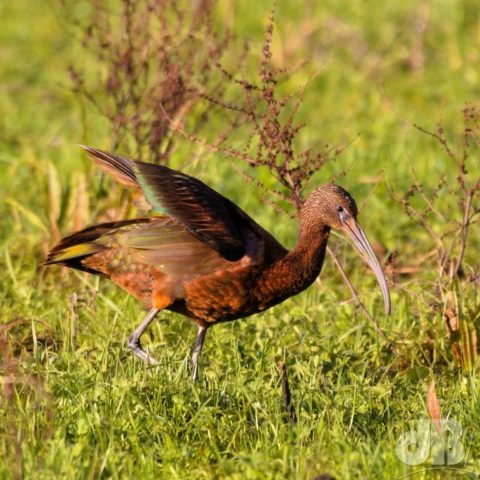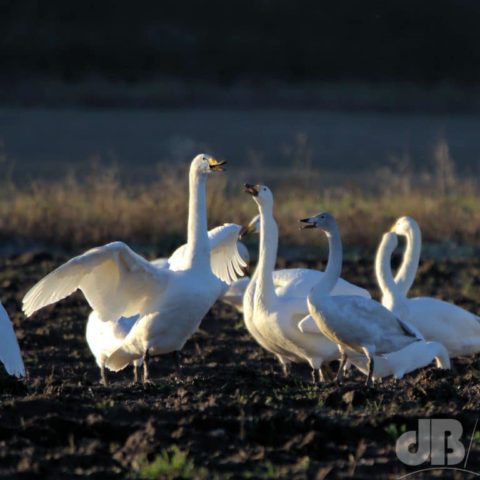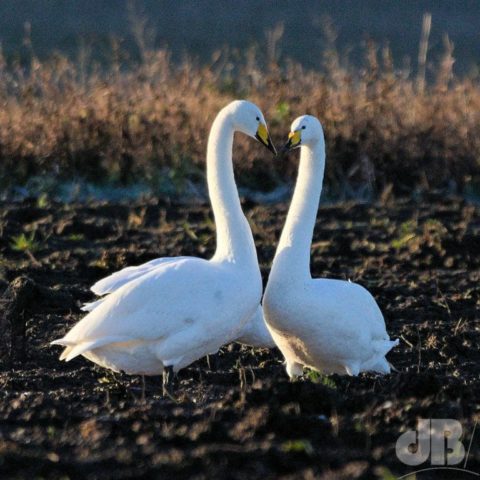TL:DR – We had a large influx of Whooper Swans on the outskirts of Cottenham early in 2021. The spectacle has not been repeated since but there are numerous birds of that species farther afield and several Bewick’s Swans sighted.
UPDATE: January 2022 – Several hundred Whoopers arrived on Bullock’s Haste and out on Setchel Fen. I should add that fellow villager Ian Ellis undertook a detailed study of bird species on the flood at Smithy Fen and recorded well over 150 different species. Many of the species he recorded are not commonly seen in these parts.
December 2021 – WWT Welney wardens counting well over 13000 roosting Whoopers on their patch.
Back in November 2020, I noticed quite a lot of swans, Whooper Swans to be precise, pecking and calling on the farmland between the River Great Ouse and the fenland north of our village, Cottenham. Those numbers have gone up substantially in the last week or so. (Update: 2021-01-31 – 500 swans)
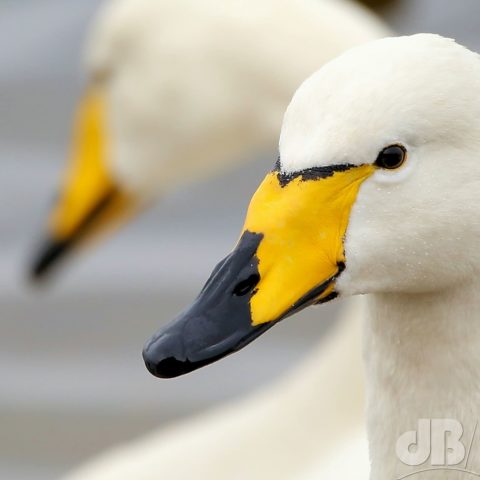
One birding friend Ian counted 500+ on a trek along one of the droves to observe them, and he reported back again today that he estimates there are perhaps 800 spread across two or three sites north of our village. Moreover, reports from elsewhere around Cambridge hint at four-figure numbers of the birds on our patch, he says.
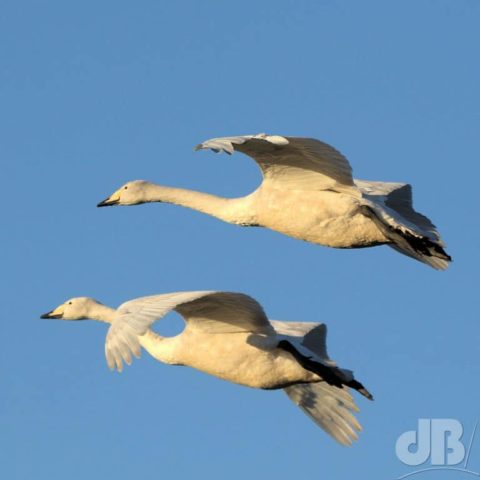
Another friend, Chris pointed out that he was being kept awake by honking calls from behind the Tenison Manor Estate, locally referred to as “The Birds” because the street names are bird names. Turns out it’s Whooper Swans (Cygnus cygnus) there too, between the Cottenham Lode, The Cut, and the Les King Wood, perhaps fifty or so. The numbers may swell as the winter moves on.
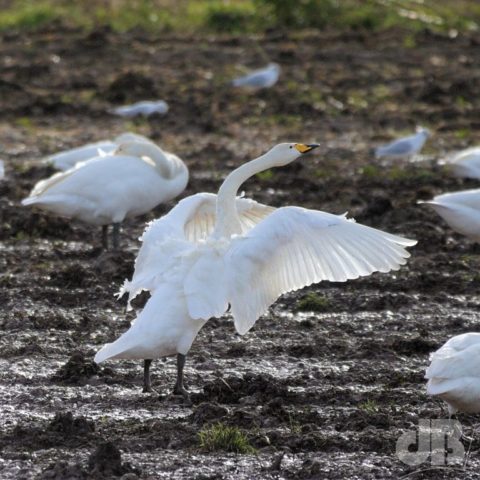
If you’ve ever visited WWT Welney* in Norfolk, you may well be familiar with the Whooper Swan. They’re a big white bird, with a black and yellow bill, but they lack the bobble on the bill of the more frequently seen Mute Swan (Cygnus olor). The Whoopers head south from their summer breeding grounds in Iceland to find food and shelter. Welney welcomes thousands of winter visitors, including Whoopers and their relative Bewick’s Swan (Cygnus columbianus bewickii) each winter. Apparently, this season, there is so much flooding and food on farmland, that very few swans are showing at feeding time at Welney. The “w” is silent in whooper by the way, viz whooping cough, so it’s pronounced “hooper”, in case you were wondering. It’s not silent in WWT Welney.
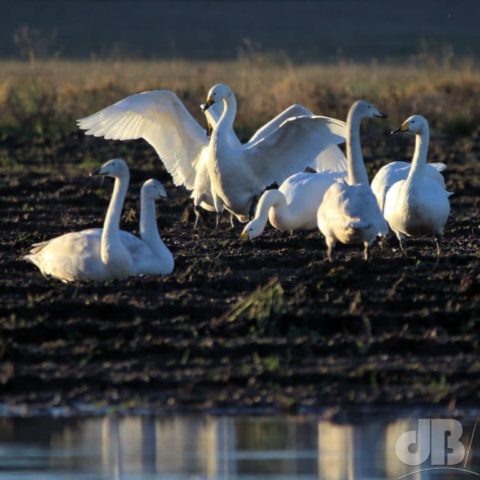
Regardless of which field you spot the Whoopers on, they fly to roost each evening. They head north to open water, the washes, for instance, possibly even Welney itself, Ian tells me.
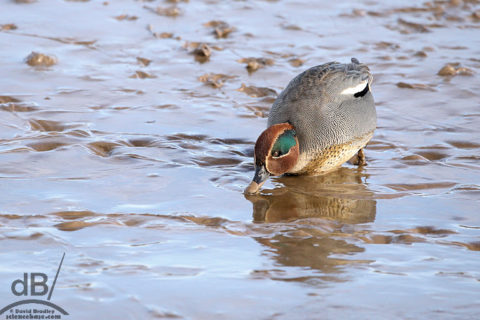
You might also notice that scientific name, the binomial, of the Whooper – Cygnus cygnus. This is another tautonym, the repetition of the genus in the specific (species) name indicates that the Whoopers are the “type” of the swan genus, the archetypal swan, just as Buteo buteo, the Common Buzzard, is the archetypal buzzard and Gorilla gorilla gorilla, the Western Lowland Gorilla is the archetypal gorilla.
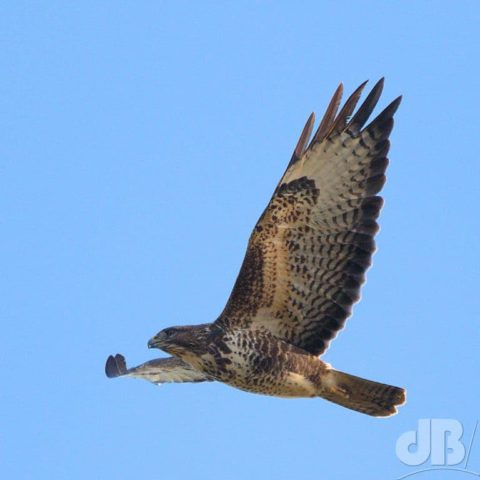
There are lots of flooded fields around us that have also attracted Teal, Gadwall, Pochard, Wigeon, Goosander, Shoveller Ducks, and others, birds that we do not commonly see on the farmland around our village. Other birds to watch out for feeding in the fields and hedgerows – the winter thrushes: Fieldfare and Redwing. You will also see Corn Bunting and Reed Bunting, Yellowhammer, and Meadow Pipit. These are here all year. So too, Linnet, Goldfinch, and Greenfinch which are flocking around the outskirts of the village groups of several dozen depending on where you go for your allowed daily exercise.
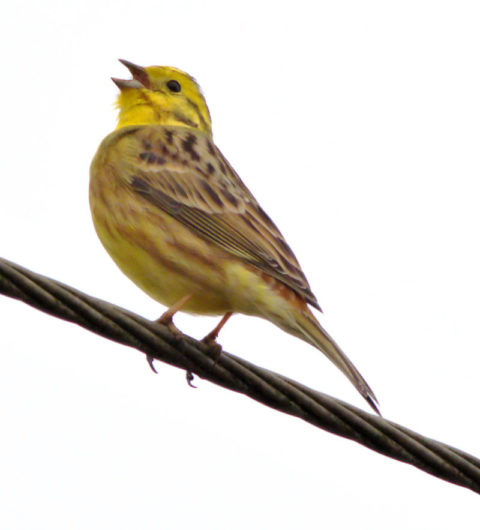
Also to be seen: male and female Stonechat (usually in pairs). You might also see small gatherings of Pied Wagtails around farmland wet patches and on dung heaps. You might even spot the yellow rump of its relative the Grey Wagtail, but you most likely won’t see a Yellow Wagtail just yet, they’re summer visitors. But, do keep your eyes peeled for the European relative of the Pied Wagtail, the White Wagtail, which seems to be turning up more frequently now. At the time of writing, Water Pipit were not on the village list, but birders have seen them since.
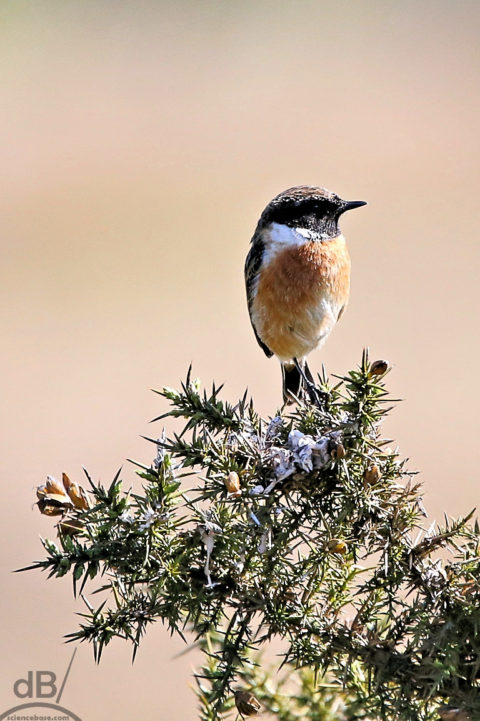
Also, given the flooding and the growing number of Glossy Ibis around Cambridgeshire at the moment, it would great news to hear of one on the Fen Edge Patch, do let me know if you see this rather exotic visitor within walking distance.
